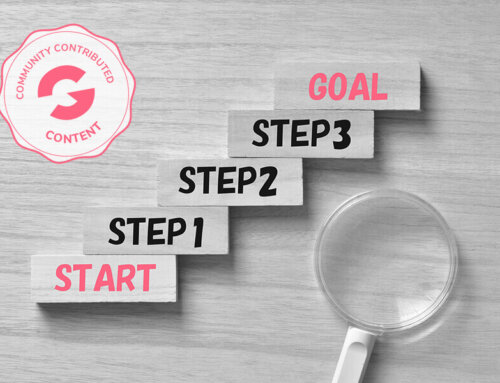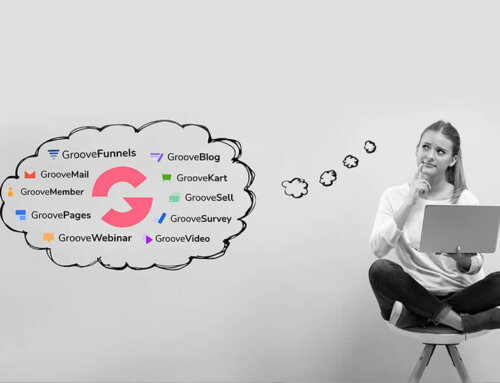Your Customers Will Abandon You if You Don’t Take Care of Their Needs
Yay, you did it!
You spent a shocking amount of cash on a marketing campaign that targeted several of the possible groups who would be interested in what your company has to offer. For several weeks there was a giant uptick in traffic on your website. A spike of interest across various social channels.
And yet, surprisingly, very little purchasing or action occurred beyond a cursory glance at your beautifully rendered pages.
You certainly didn’t make nearly enough from this marketing blitz to justify the spending.
What happened? They came, they saw, and they left.
Now you’re alone, the smell of unmet desires in the air, wondering what you did wrong.
I hate to tell you, but this is a solid case of, “It’s not them, it’s you.” Or, more accurately, it’s your business.
You made a crucial mistake. You spent so much time writing flattering copy and singing the product’s praises, that you forgot the most important aspect you’re trying to sell.
Proof that your company has the ability to care for the customer.
You have the content, but you’re lacking a strategy to engage with the customer and show them that you’re a brand who ISN’T only after one thing…
Money. I’m talking about money. Obviously.
Why do you need a good content strategy if you have content?
Well, there are millions of similar services and products out there, vying for attention. What sets the best apart from the “meh” brands is their ability to hone in on their customers needs and guide them through their decision-making process.
And the content strategy, which includes making the customer realize they have a need, showing how you could help them specifically, and making them confident enough in their decision to complete the purchase, is a tool to help them on said journey.
But what does that customer journey look like and how do you use it effectively to build trust?
To make it easy, imagine you are getting in a relationship with your customer. It’s time to prove that you want more than just a fling.
Demonstrate your understanding that your customer is not a monolith
Yes, broad demographics are easy to understand and useful. Yet stereotyping everyone into one giant large blob shows in the final marketing material. You need to pinpoint specific niches and reach out to those with targeted content marketing.
Show them that you’re listening.
Not only will they read everything you send them, but people are far more likely to share information that connects them with someone they know dealing with similar circumstances. Understanding those small but important aspects of your customers will allow you to create products and services and present them in a way that make them feel special.
Use data to create winning, personalized strategies
The easiest way to understand your clients is through the data; email signups, opt-outs, purchase history, click rate, questionnaires, surveys, and any other measurement you can get your hands on.
Use this information to create a better picture of those doing business with your company. And most importantly why and when they choose NOT to do business.
I’m not suggesting sending a groveling message to them begging for an explanation. This isn’t your college ex. But you should pay attention to patterns of behavior, especially when multiple customers are fleeing from your services.
Chances are, they don’t have to change. You do.
Educate them so they feel more in control when they are making decisions
Another way to show the customer you value them while still helping them down the path toward your preferred action is by investing in them.
This means you shouldn’t immediately push them to your “buy me now” page. Gently move them from one article to another, teaching them the value they would be receiving if they gave you their business.
Then, and only then, will they feel like they are in control of the situation and getting the best deal possible.
They’ll get the sense that you care about them and their needs, and that the whole process wasn’t merely transactional. It meant something, you know?
Not to bring up the ex thing again, but no one wants to feel used. Especially by a business they thought they could trust.
Show you them they aren’t just a fling by staying connected
Don’t let them be the one that got away. A customer has the chance to be a repeat customer and shouldn’t be taken for granted or they’ll find a business who gives them what you can’t.
Once the purchase is done or the email is signed up for, follow through. Send updates, deals, messages, flowers (OK, not flowers unless you are a floral company), and other goodies that make them excited to open their inbox. Let them know you’re thinking of them. Otherwise when you send that 3AM booty promotion it’s going to be left unread.
More importantly staying in touch keeps your customers from being unfaithful. They won’t have a reason to stray if you keep meeting their needs. Ignore them at your peril. Customers respect themselves and expect you to do the same. If you can’t you’ll find yourself a very lonely business.
Being aware of how to lead your customer through their journey is not only smart, but essential for online business. By focusing on niche aspects of your customers, using data to figure out your strengths and weaknesses in relation to your customers, bringing your customer to pages full of information instead of immediately trying to push the sale, and treating them well even after the purchase is complete you will ensure that they are happy and that you sell more.
Plus, a happy customer is a repeat customer who tells all their friends.
Sorry if you already spent all that money on a soulless campaign. Next time will be better.





Leave A Comment